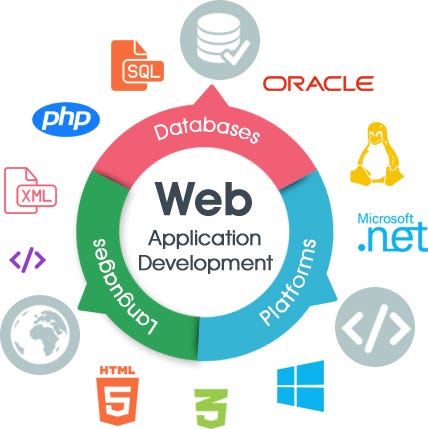
You might have an idea of what a web application is and how it differs from other types of mobile applications. The development of Web applications is not limited to smartphones or tablets; rather this type of application is designed to run on any browser, either on fixed computers, laptops, or mobile devices. Here we will classify the different types of web applications. This classification is based on how the web apps show the content they accept. Based on this, we have 6 different types of web applications. Techimpero is committed to supplying the best Web development service in Delhi and also other services which includes website designing, mobile app development, web app development and a lot of designing technologies. We have gathered a professional engineering and sales team to serve global clients.
Static Web Applications:
If you choose to create a static web app, the first thing to know is that this type of web application displays very little content and is not particularly flexible.
These Applications are usually developed in HTML and CSS but these are not the only platforms to develop the static app; you can use jQuery and Ajax as per your own convenience. You can also include or display the animated objects, such as banners, GIFs, videos, etc. in the static app handily.
Unfortunately, modifying the content of the static web applications is not easy. To do this, you first have to download HTML code, then modify it and finally send it back to the server. These changes can only be made by the webmaster or the development company that planned and designed the first Application.
Examples of the development of static web applications include the professional portfolios or digital resumes. Similarly, a page presenting a company could also make the use of this type of web application to display their contact information.
Dynamic Web Applications:
These applications are much more complex on a technical level. They use the databases for data loading and its contents are updated each time the user accesses them. They usually have an administration panel (called CMS), where the administrators can correct or modify application content, whether text or images.
Different programming languages can be used for development of dynamic web applications. PHP and ASP are the most common languages used for these purposes because they allow the structuring of contents.
In this type of application, updating the content is very simple and the server does not even have to be accessed for modifications to be made. Also, it allows you to implement an abundance of the features, such as forums or databases. The project — in addition to the content — can be modified to match the administrator preferences.
Shop Online or E-Commerce:
If the web application is an online store, its development is likely to resemble that of an m-commerce or e-commerce site. This type of application development process is more complicated because it must allow the electronic payments that can be made from credit cards, PayPal, or other payment methods. The developer must also create a management panel for the administrator; that will be used for the listing of the new products, update them, delete the entries, and manage applications and payments.
Your web application fits on the mobile devices the same way as a mobile app does, making it possible to interact with it as if it were a native application.
Also Read: Types of Social Media Marketing
Portal Web App:
Through the portal, we are referring to a type of application which accesses the various sections or categories through a home page. These applications can include many things: forums, chats, e-mail, browsers, areas accessed through registration, latest content, etc.
Animated Web Applications:
The animation is inevitably associated with the Flash technology. This programming approach allows you to display the content with animated effects. This type of application allows more creative and modern designs and is one of the key technologies used by the designers and creative directors. The disadvantage inherent in the development of animated web applications is that this type of technology is not suitable for the web positioning purposes and optimization of SEO because search engines cannot properly read the information they contain.
Web Applications with a Content Management System:
The content should be constantly updated when it comes to the web application development so that the installation of a content management system (CMS) is a serious option to consider. The administrator can make use of this CMS to implement the changes and updates alone.
These content managers are intuitive and are very easy to handle. Some examples of content management systems are:
- WordPress: It is undoubtedly the most widespread around content management. There is plenty of information, tutorials, and guides available on the internet that will help you customize it and understand how it works. Besides all this, it’s free.
- Joomla: This CMS is second only behind WordPress. It does not have as many users as the last but it has a strong community and is also very intuitive.
Drupal: It is free CSM software — very adaptable and is especially recommended for building communities. This type of web application is very common among the content pages: personal blogs, corporate blogs, professional blogs, lnews pages, articles and media, etc.
No comments:
Post a Comment